Smoke bush Cotinus Dusky Maiden = 'Londus' (PBR)

ABOUT
The Cotinus Dusky Maiden, also known as the Smoke Bush, is a visually striking plant with a unique and attractive appearance. It showcases velvety foliage that ranges in color from deep purple to nearly black, adding a dramatic flair to any landscape. Throughout the seasons, the leaves maintain their rich hue, offering a lasting display of dark beauty. As the Smoke Bush progresses through its seasonal cycle, it produces feathery plumes that resemble smoke, hence its common name. These plumes emerge in an appealing contrast to the dark leaves, creating a soft yet eye-catching effect that can be both alluring and mysterious. The plant carries a majestic presence with its bold foliage and whimsical 'smoky' flowers, making it a favorite for gardeners aiming to create an area of interest or a focal point in their gardens. The Smoke Bush is not only known for its ornamental value but also for its ease of maintenance, as it is a hardy plant that can adapt to a variety of conditions while still providing a remarkable visual display.
About this plant
 Names
NamesFamily
Anacardiaceae.
Synonyms
Smoke Bush, Venetian Sumach, Smoketree, Purple Smoketree.
Common names
Cotinus Dusky Maiden = 'Londus' (PBR)
 Toxicity
ToxicityTo humans
The common name of Cotinus Dusky Maiden = 'Londus' (PBR) is Smoke Bush. Generally, the Smoke Bush is not considered highly toxic to humans. However, some people may experience mild irritation or an allergic reaction if they come into contact with the plant’s sap or handle its leaves. If someone ingests part of the plant, they may experience gastrointestinal discomfort, such as nausea, vomiting, or diarrhea. As reactions can vary, if ingestion occurs or symptoms appear, it's advisable to seek medical attention.
To pets
The common name of Cotinus Dusky Maiden = 'Londus' (PBR) is Smoke Bush. Smoke Bush is not known to be highly toxic to pets, but it can cause mild gastrointestinal upset if ingested. Symptoms that may occur if a pet eats parts of the Smoke Bush include vomiting and diarrhea. If you suspect your pet has ingested Smoke Bush and is showing symptoms of poisoning, it is best to contact a veterinarian.
 Characteristics
CharacteristicsLife cycle
Perennials
Foliage type
Deciduous
Color of leaves
Maroon
Flower color
Pink
Height
5 feet (1.5 meters)
Spread
5 feet (1.5 meters)
Plant type
Shrub
Hardiness zones
5
Native area
Europe
Benefits
 General Benefits
General Benefits- Aesthetic Appeal: The Cotinus 'Dusky Maiden' is known for its beautiful dark purple foliage that adds a dramatic touch to any landscape.
- Drought Tolerance: Once established, it is quite drought-tolerant, making it suitable for xeriscaping or low-water gardens.
- Easy Care: This plant requires minimal maintenance, which makes it ideal for gardeners of all skill levels.
- Seasonal Interest: It offers seasonal interest with foliage that changes color in the fall, and feathery flower panicles in the summer.
- Wildlife Attraction: Its flowers can attract pollinators like bees, butterflies, and birds, enhancing biodiversity.
- Compact Growth: 'Dusky Maiden' has a more compact growth habit compared to other Cotinus varieties, making it suitable for smaller spaces.
 Medical Properties
Medical PropertiesThis plant is not used for medical purposes.
 Air-purifying Qualities
Air-purifying QualitiesThis plant is not specifically known for air purifying qualities.
 Other Uses
Other Uses- The smoke bush can be used in dye production; the foliage and bark may yield different colors for fabric or craft projects.
- Wood from the smoke bush, when properly treated, can be used for small woodworking or carving projects due to its hardness and grain pattern.
- Dried branches can be incorporated into floral arrangements or wreaths for unique textures and colors.
- The plant's dense foliage can offer privacy or serve as a living screen in landscaping designs.
- The smoke bush can be trained and shaped into topiary forms for artistic or decorative garden elements.
- Leaves from the smoke bush can be pressed and used in botanical art or herbarium collections for educational purposes.
- During the fall, the vibrant foliage can be collected and used for seasonal decorations or crafts due to its striking autumn color palette.
- The wood from the smoke bush can be used as specialty smoking chips to impart a unique flavor to smoked meats or cheeses, although usage should be thoroughly researched to ensure it is safe for this purpose.
- Young smoke bush stems may be used in basket weaving or as organic ties in gardening for staking plants.
- If permitted, the bright, dramatic plumes of the smoke bush can be used as a natural dye for temporary tattoos or body art.
Interesting Facts
 Feng Shui
Feng ShuiThe Smoke Bush is not used in Feng Shui practice.
 Zodiac Sign Compitability
Zodiac Sign CompitabilityThe Smoke Bush is not used in astrology practice.
 Plant Symbolism
Plant Symbolism- Smoke Tree - The Cotinus Dusky Maiden, also known as the Smoke Tree, often symbolizes mystery and enchantment, given its ethereal, smoke-like bloom clusters.
- Transformation - The Smoke Tree's unique color-changing leaves, which transition from dusky purple to red, can represent change or metamorphosis.
- Illusion - With its smoky appearance, it may signify the element of illusion or the blurring of lines between reality and fantasy.
- Protection - Historically, some cultures have associated smoke with cleansing and protective properties, which could translate to the Smoke Tree symbolizing a shield against negativity.
 Water
WaterThe Smoke Bush requires moderate watering. During the growing season, water it thoroughly once weekly with about 1.5 gallons of water, ensuring the soil is moist but not waterlogged. Reduce watering in fall as the plant goes dormant and keep the soil drier in winter. Always check the top inch of the soil for dryness before watering again. It's important not to overwater as the Smoke Bush is relatively drought tolerant and excessive moisture can lead to root rot.
 Light
LightThe Smoke Bush thrives best in full sun to partial shade. It should be placed in a spot where it receives at least 6 hours of direct sunlight each day. However, it can tolerate some light afternoon shade, especially in extremely hot climates. Avoid deep shade as it can lead to poor foliage color and sparse growth.
 Temperature
TemperatureThe Smoke Bush prefers a temperature range of 60°F to 75°F but can withstand temperatures as low as 0°F and as high as 95°F. It's important to protect the plant from extreme cold winds and to mulch it well to ensure root insulation. The ideal temperature conditions for the Smoke Bush are temperate climates with distinct seasons, especially cool to warm springs and summers.
 Pruning
PruningPruning the Smoke Bush should be done to maintain its shape, encourage bushier growth, and remove any dead or diseased wood. It is best pruned in late winter or early spring before new growth starts. Prune as needed, but light annual pruning is often sufficient to keep the plant healthy and well-formed. Pruning at this time of year ensures that the plant heals quickly and reduces the risk of disease.
 Cleaning
CleaningAs needed
 Soil
SoilThe Smoke Bush, commonly known as Cotinus, thrives in well-draining soil with a pH of 5.5 to 7.5. A soil mix containing loam, peat, and coarse sand or perlite in equal parts is ideal, ensuring good aeration and drainage.
 Repotting
RepottingThe Smoke Bush typically does not require frequent repotting. It can be repotted every 3 to 5 years, or when it has clearly outgrown its current container, to refresh the soil and provide more room for growth.
 Humidity & Misting
Humidity & MistingSmoke Bush prefers a moderate humidity level but is quite adaptable and can tolerate the humidity levels typically found in most outdoor environments without issue.
 Suitable locations
Suitable locationsIndoor
To grow Smoke Bush indoors, ensure bright light and room to grow.
Outdoor
Plant Smoke Bush in full sun, with well-draining soil.
Hardiness zone
5-8 USDA
 Life cycle
Life cycleCotinus 'Dusky Maiden', commonly known as the smoke bush, begins its life cycle as a seed, which, once germinated in favorable conditions of well-drained soil and full sunlight, develops a root system and a small shoot. The shoot grows into a sapling, which gradually matures into a bushy shrub with multiple stems. During spring and summer, the smoke bush produces panicles of tiny, feathery flowers, giving the plant a smoky, hazy appearance. After flowering, the plant sets seeds that are dispersed by wind or animals, completing the reproductive stage. Throughout the growing seasons, the smoke bush's leaves, which may exhibit a dark, reddish-purple color, undergo photosynthesis to fuel growth and development. In autumn, the leaves often change to stunning shades of orange, red, or yellow before falling off as the plant enters dormancy in winter, only to rejuvenate and start the cycle anew with the return of warmer spring temperatures.
 Propogation
PropogationPropogation time
Spring-Early Summer
Propogation: The Cotinus 'Dusky Maiden', also commonly known as Smoke Bush, can be propagated using semi-hardwood cuttings during the late summer months. The process involves selecting a healthy stem from the current year's growth, making a cutting approximately 6 to 8 inches (15 to 20 centimeters) long, and removing the leaves from the lower half. The cut end is often dipped in rooting hormone to encourage root development, then planted in a well-draining soil mix. Keeping the soil moist and the cutting under partial shade helps to prevent stress while the new roots form. This straightforward method is favored as it maintains the characteristics of the parent plant, ensuring the new Smoke Bush exhibits the same attractive features as 'Dusky Maiden'.
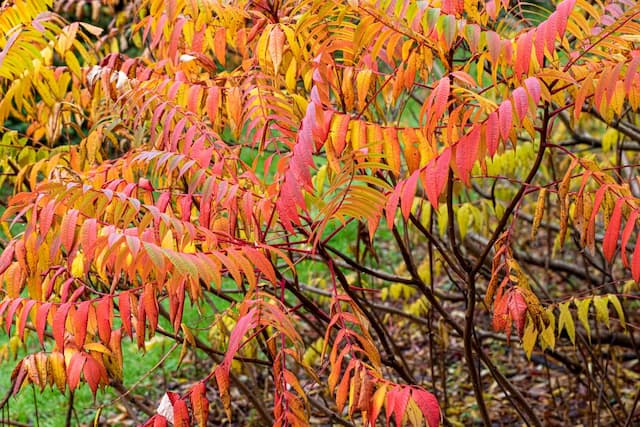

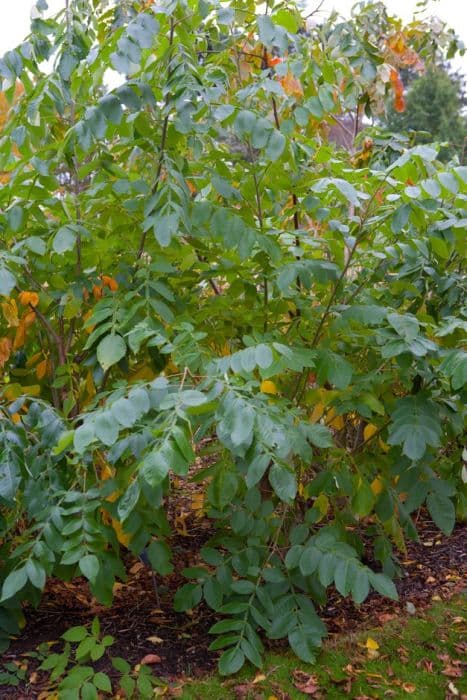
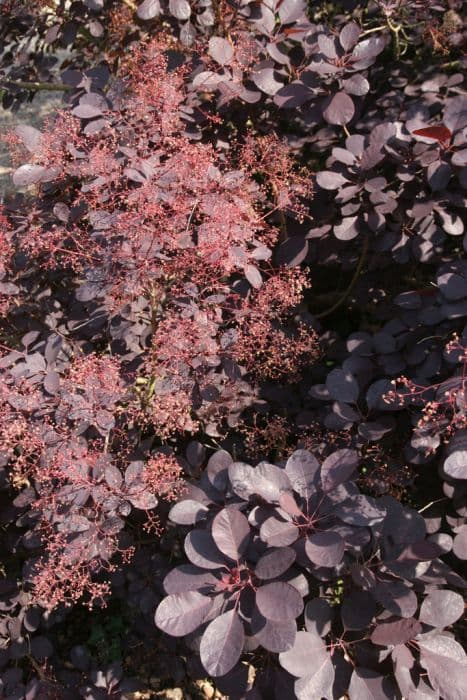

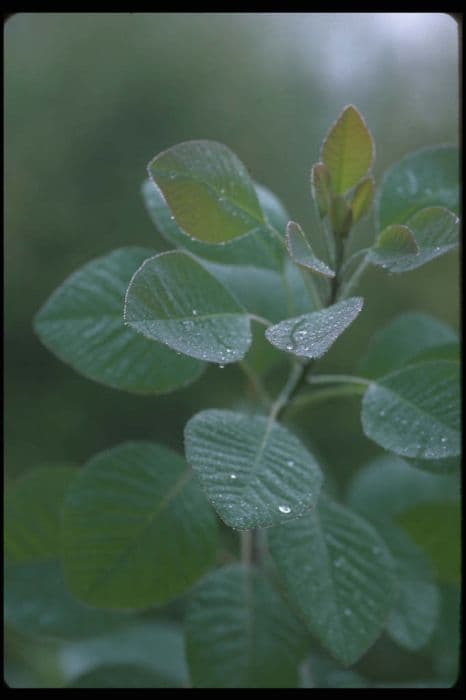
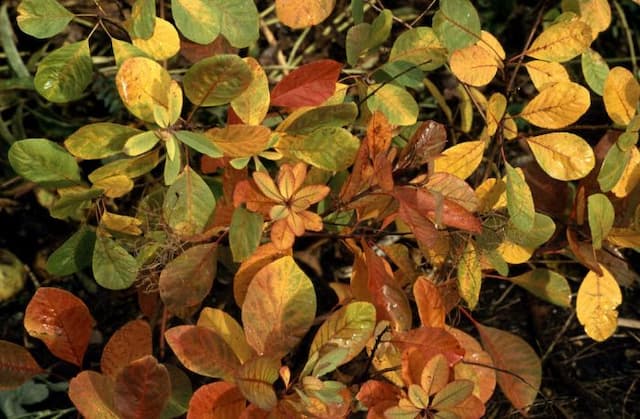
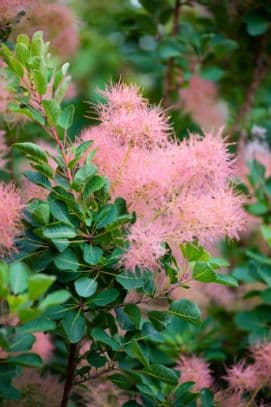
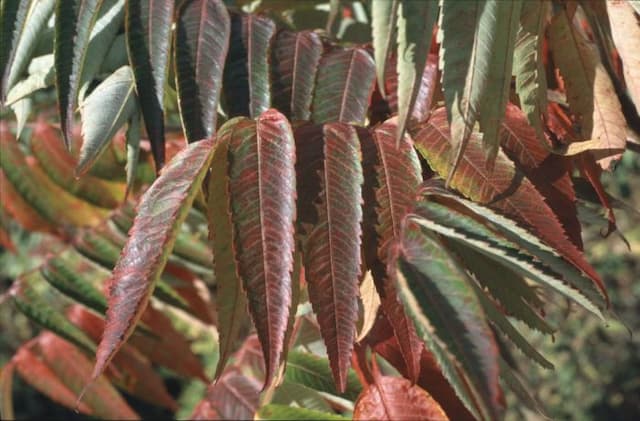
![Smoke tree [Golden Spirit]](/_next/image?url=https%3A%2F%2Fplants-admin.emdemapps.com%2Fimages%2Fplants%2F%2Fimages%2F604b63b450a12.png&w=640&q=75)